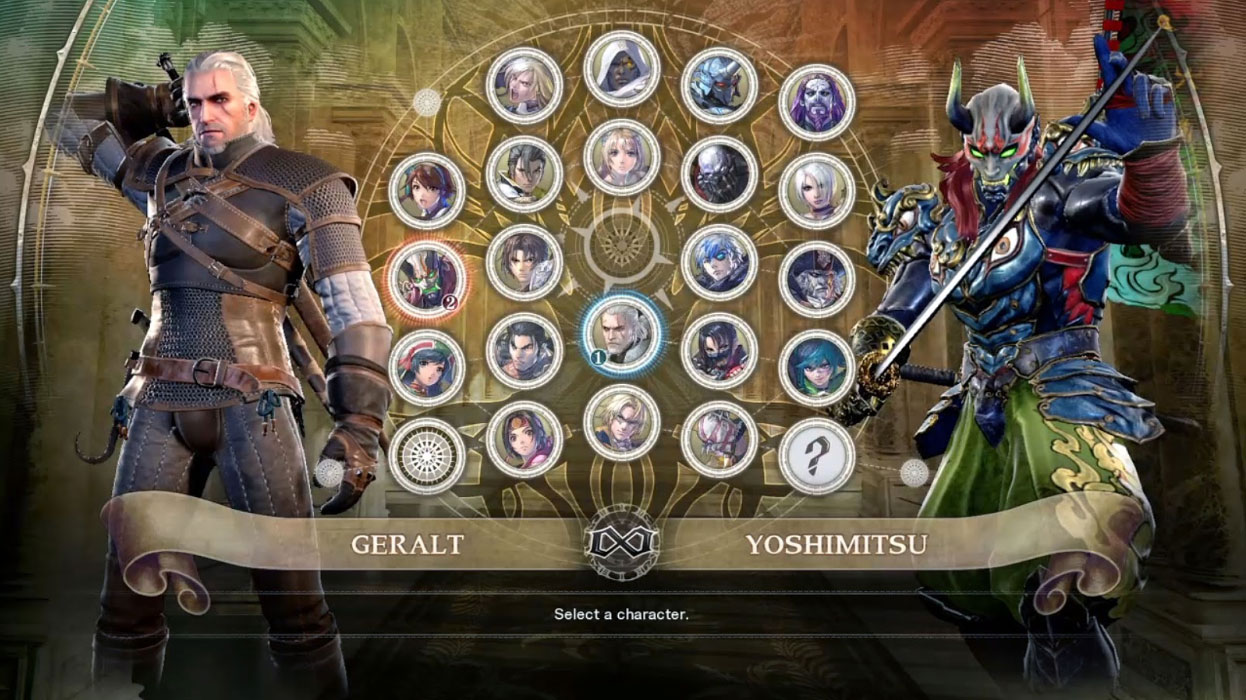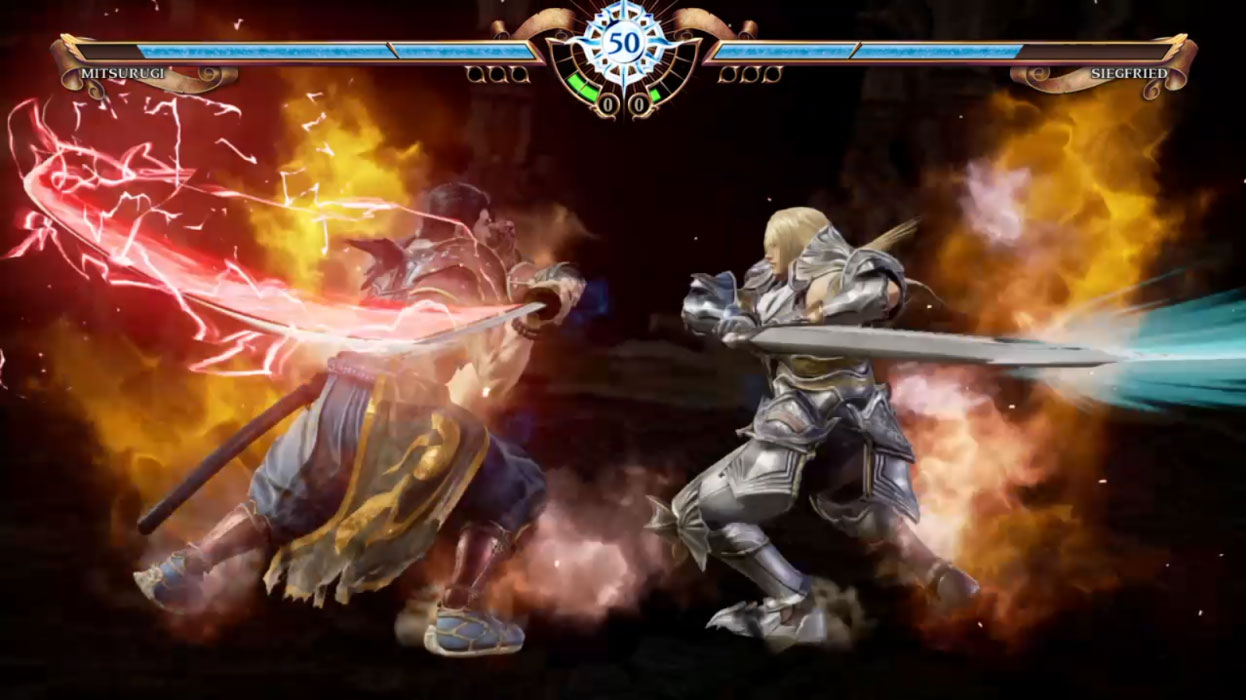Soulcalibur VI Review - “A Tale of Swords And Souls Eternally Retold”
/Following the announcement of Soulcalibur VI during last year’s The Game Awards, I became excited for two main reasons: 2018 would mark a surprising six years since we’ve last had a Soulcalibur game, and developer Project Soul would be treating Soulcalibur VI as both a celebration of the series and a reboot. Now that Soulcalibur VI is finally being released this week, we’ve been thoroughly exploring the game’s new mechanics and modes. Is Soulcalibur VI worth the wait, and is it a true celebration of all things Soulcalibur? “Entrust your noble soul in your sword” and read on.
“A Hero desires a Sword, and a Sword desires Truth.”
For anyone new to the franchise, Soulcalibur is a 3D weapons-based fighting game from publisher Bandai Namco and developer Project Soul. You could say that Soulcalibur is the sister game to Tekken, Bandai Namco’s other 3D fighting game giant. Set in a semi-fantasy version of the 16th century, Soulcalibur VI pits two combatants armed to the teeth with weapons used during that time period against one another in enclosed arenas. From katanas, bastard swords, bo staffs, short swords, and hammers, players will surely be greeted by a variety of fighting styles they can get into through the game’s assortment of characters.
Soulcalibur VI is a joy to play and easy to get into thanks to its unique and beginner-friendly control system. For starters, Soulcalibur follows a four-button layout where players have access to 3 attack buttons via A (horizontal slash), B (vertical slash), and K (KICK!). The fourth button is the G (Guard) button. If you’ve played Virtua Fighter or any of the Mortal Kombat games, you’ll feel at home with regards to blocking. The other unique Soulcalibur mechanic is its 8-Way Run system, where players can position themselves strategically with ease. Utilizing button combinations and 8-way-run-specific moves gives you a wide variety of approaches.
“Soulcalibur VI is a joy to play and easy to get into thanks to its unique and beginner-friendly control system.”
There are also new, returning, and changed game mechanics this time around. The most significant one is Reversal Edge (B+G), which is a type of guard leading to a counter-attack similar to Street Fighter IV’s Save/Focus system. Once a Reversal Edge hits, a slow-motion sequence triggers wherein the fighters prepare to clash. During this time, both players get to engage in a rock-paper-scissors-esque mini-game where the winning player gets the advantage and lands a couple more hits, ending the sequence. It’s a simple, yet surprisingly deep mechanic, since in addition to choosing to input an attack, you can guard, sidestep, or dash forward/backward. This is a welcome addition, since it simultaneously adds to the intensity of matches, gives new players a fair chance, and adds a new and exciting mix-up tool for series veterans.
However, the introduction of Reversal Edge results in some changes regarding throw inputs and Guard Impacts. Since Reversal Edge is assigned to B+G, Throws are now exclusively done using A+G with some additional throws assigned to either forward+A+G or back+A+G, depending on your character. Guard Impacts can now be performed by hitting Forward+Guard, which is similar to how they were done prior to Soulcalibur V (Back+A+B+K). Other Game mechanics such as Critical Edge (Super Moves) and Soul Charge are back, with the latter seeing slight differences. Lastly, there’s Lethal Hit, another new mechanic wherein certain moves trigger special states or bonus properties (along with a nifty slow-mo sequence) after meeting specific conditions such as performing counter hits, whiff punishes, or punishing attacks while ducking. Lethal Hits also break off segments of your opponent's’ armor. Satisfying!
“He plunges head-first into the Vortex of Destiny.”
Aside from playing against a friend locally or CPU via the game’s proper Arcade Mode and Battle Mode, Soulcalibur VI has a solid offering of single-player modes. The aptly titled Soul Chronicle is Soulcalibur VI’s main story mode. It’s a retelling/reboot of Soulcalibur’s story, as well as those of its characters. The main story begins from the time Siegfried became Nightmare. You’re then taken from chapter to chapter of the game’s vast collection of history and stories told in either illustrations, 3D clips, or 2D sequences, all with accompanying narration or dialogue. Aside from the main story of Soul Chronicle, there are also character-specific episodes for you to enjoy. Even guest character Geralt of Rivia has his own Soul Chronicle arc, making him somewhat canon to Soulcalibur.
Out of the two story modes, Soul Chronicle might be the easier mode to digest, content-wise. It’s fun seeing how Soul Chronicle updates the franchise’s lore and history, and if you don’t care much for the main story, you can just select your favorite character’s Soul Chronicle arc and find out what happens to him/her this time around. Will Raphael turn into a vampire or a werewolf? Time to find out, I suppose!
Libra of Soul is the second story-driven mode, where you create a fresh new character from scratch, then drop them into the middle of Soulcalibur’s world, where he/she is given a quest to stop a new evil from gathering the Soul Edge shards (again) and prevent the bad guys from... ahem, tipping the balance between good and evil. You’ll be meeting a few characters from Soulcalibur as well as new ones written specifically for this mode. A world map allows you to visit places and take quests and missions for EXP to level up your character as well as gold for buying weapons, and food for pre-fight buffs. Also, a nifty feature is that community-created characters uploaded in Soulcalibur VI’s servers will show up in Libra of Soul, so you may see one of your friends’ goofy swordsmen on one of your quests!
“Soul Chronicle updates the franchise’s lore and history, and if you don’t care much for the main story, you can just select your favorite character’s Soul Chronicle arc and find out what happens to him/her this time around.”
Libra of Soul isn’t so bad and may serve up as your time-waster when you don’t feel like grinding the leaderboards in online multiplayer or hitting up the lab in Training Mode. There are interesting bits of story hidden on the bounty of quests you’ll encounter, and the main story does indeed introduce a “new threat” that might tickle your lore love-handles. There are even parts of the story where the game prompts you to make choices that will shape your character’s moral compass (yep, your character can be EEEVIIIL in this mode. Also, Libra. Scales. Go figure.) But most of the time I found myself skipping the tiny walls of dialogue and proceeded to just fight whichever dude was attached to the quest. Of the two story modes, Libra of Soul is slower and more meticulous. Progress depends on your pace, and your enjoyment is tied to how deeply invested you want to be in the mode’s main story, since your character takes center stage.
“The almighty ones have granted you a sword to cut your own path”
Completing battles in the game’s single-player modes will reward you with unlockables and gold that you can spend inside the Museum, which is home to all the illustrations and cutscenes you’ve unlocked in Soul Chronicle as well as items you can unlock with Gold. The highlights worthy of notice are the galleries of past Soulcalibur titles, from Soul Edge to Soulcalibur V. It wouldn’t be a celebration of Soulcalibur without every piece of concept art, key art, and illustration from the series, would it? There are also pages and pages of Soulcalibur lore in this section, from in-depth biographies of the characters, to the weapons they’ve used, and even each game’s organizations and factions.
Last but not least, there’s the mode where you’ll likely spend hours on end: Character Creation. Soulcalibur sports a fairly robust Character Creation tool where you can customize the race, gender, layers of clothing, weapon, and even profile image of your character. This mode also allows you to modify the existing roster. Once you’ve birthed your very own homunculus, you can upload them to Soulcalibur VI’s servers, where players from around the world can check out other players’ character creations, then download them into their game. I’ve already seen a few 2Bs and Bowsettes in the Character Creation browser, so that’s a good sign (I guess).
“The legend will never die”
Soulcalibur VI delivers newcomers and old-time fans alike a double serving: it’s a solid 3D fighter that will surely keep one’s fighting game community busy for months (or years) to come, and a single-player experience chock-full of things to do thanks to two lengthy single-player campaigns and an absorbing Character Creation mode (not to mention the future content updates we’ll be getting for the first couple of months!). As for online play, the game’s offering of Casual and Ranked Matches so far has been solid thanks to its net code performing similar to Tekken 7’s, but expect Soulcalibur VI’s online longevity to flourish based on how many wacky custom characters players will be able to churn up. Nothing is as satisfying as beating someone online using one of your Senior Editors wielding Soul Edge.
9/10
Highlights
New Mechanics such as Reversal Edge are a welcome addition to the game’s solid gameplay.
Lots of things to do thanks to its single player modes, character creation suite, and Museum of unlockable Soulcalibur history!
Geralt is a perfect fit for a guest character.
A somewhat limited roster will likely make players miss their franchise favorites. Only 3 new characters in this latest iteration
Could use less loading screens during Libra of Soul and Soul Chronicle
What I’ve Played
8 hours spent in Soul Chronicle Mode
5 hours spent in Libra of Soul using a scythe-wielding Mummy named Benie
Created a couple of custom characters, and shared them to the world.
Spent a combined 8 hours fighting CPU opponents in Arcade Mode as well as against players online.
[This review is based on a PS4 review copy provided to Too Much Gaming by Bandai Namco.]






















Little Nightmares 3 launches on October 10, with pre-orders now available. Details on the Deluxe and Spiral Editions, along with new projects like Little Nightmares VR and upcoming books, were also revealed.